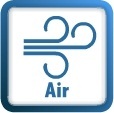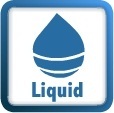P02 piezoresistive pressure transmitter



























Showing all 5 results
A pressure transducer (pressure sensor) is a device that senses pressure and converts it into an electrical signal whose strength depends on the applied pressure. Luksens designs and manufactures a wide range of pressure transducers, from small sensing elements to large system packages for harsh environments. We are professional pressure transducer manufacturer in standard and custom pressure transducers.
As a professional pressure transducer manufacturer, Luksens’ pressure transducers meet the toughest test and measurement specifications in the world’s harshest environments, including general industrial process needs and pressure transducers dedicated to hazardous areas. We use durable and reliable stainless steel construction, including wetted materials, in designing our pressure transducers to meet or exceed standard requirements. Luksens’ pressure transducers have been developed and perfected over time to meet the exact demands of our consumers. Below are some of our pressure transducers for your reference:
More About Pressure Transducer (pressure sensor)
1. What Is Pressure Transducer (pressure sensor)?
Pressure is defined as a measured quantity: it can be described as the force exerted by a liquid or gas on a surface, and it is usually measured in terms of force per unit area. Common units are Pascal (Pa), Bar (bar), N/mm2 or psi (pounds per square inch).
Definition of sensor (transducer): A sensor is a device that measures a physical quantity and converts it into a signal. The measured quantity can be temperature, length, force, or pressure, etc. The signal is usually an electrical signal, but can also be an optical signal.
Pressure Transducer (pressure sensor) Definition: A pressure transducer is an instrument consisting of pressure sensitive elements to determine the actual pressure applied to the sensor (using a different working principle) and convert the pressure information into an output signal.
2. Working Principle of Pressure Sensor
Pressure sensor suppliers use a number of different technologies to manufacture pressure sensors in order to provide accurate results. Below are some details about the technologies:
2.1 Strain-based Pressure Sensor
The first technology used by pressure sensor suppliers is strain-based pressure sensors which use strain gauges as the pressure-sensing element, which typically is a metal foil strain gauge or diaphragm bonded to a cylindrical elastomer. The biggest advantage of pressure sensors based on the strain principle is the fairly high stiffness, which can measure extremely high pressures up to 15,000 bar. The electrical connection is usually made with a Wheatstone bridge, which provides extremely high accuracy and consistent measurement results and is used by some of pressure sensor suppliers.
2.2 Capacitive Pressure Sensor
Capacitive pressure sensors use a pressure chamber and a diaphragm to create variable capacitance. When pressure is applied, the diaphragm deforms and the capacitance decreases accordingly. By measuring the circuit, an electrical signal that has a certain relationship with the voltage will be output. This technology is widely used by pressure sensor suppliers. These sensors are limited to low pressures of approximately 40 bar.
2.3 Piezoresistive Pressure Sensor
A piezoresistive pressure sensor consists of a diaphragm primarily made of silicon, with integrated strain gauges to sense the strain when pressure applied. Typically use a Wheatstone bridge to reduce sensitivity and increase output. This technology is used by many pressure sensor suppliers. Due to the materials used, the pressure is limited to around 1000 bar.
2.4 Resonant Pressure Sensors
Unlike the techniques described above, resonant pressure sensors use changes in the resonant frequency of the measurement mechanism to measure the stress induced by applied pressure. On account of the design of this sensor, the resonant element can be exposed to the medium, and the resonant frequency depends on the density of the medium. Typically these sensors are sensitive to hit and vibration. This technology is commonly used among pressure sensor suppliers.
2.5 Other Types of Pressure Sensors
In addition, there are other types of pressure sensors that do not use a measuring body, which are thermal or ionization pressure sensors, using density changes in the flow of the charged particles to measure the applied pressure. This technology is used by some pressure sensor suppliers.
3. Types of Pressure Measurement
Pressure sensors can be divided into various types according to its characteristics, including measured pressure range, operating temperature or the type of pressure they measured. Below are types of pressure measurement offered by pressure sensor suppliers:
3.1 Absolute Pressure Sensor
Absolute pressure sensor measures pressure relative to the reference chamber (near vacuum).
3.2 Gauge Pressure Sensor
Gauge pressure sensor or relative pressure sensor, is used to measure the pressure relative to the current atmospheric pressure.
3.3 Sealed Pressure Sensors
Sealed Pressure Sensors are similar to gauge pressure sensors, but they measure pressure relative to a fixed pressure rather than the current barometric pressure.
3.4 Differential Pressure Sensor
Differential pressure sensor measure the difference between two pressures and can be used to measure pressure drop, level and flow, etc.
3.5 Vacuum Gage Pressure Sensor
Vacuum sensors are used to measure vacuum or sub-atmospheric pressures. Vacuum means pressure below atmospheric. Since true vacuum is never attained, the measurement is in respect to a near absence of gas pressure.
4. What We Offer as Professional Pressure Sensor Manufacturer
We have been pressure sensor manufacturer since 2018, and now our products are widely used in various industries, such as Medical, HVAC&R, off-highway vehicles, heavy equipment, hazardous area, and so on. As a professional pressure sensor manufacturer, Luksens stringent quality policy is recognized by the ISO 9001 certification. Understand deeply that quality is the fundamental to the industry. We also established a perfect system from supply chain to delivery & Logistics to make sure the lead time is short, so that we can keep our guarantee to be a responsible pressure sensor manufacturer.
Moreover, as a professional pressure sensor manufacturer, Luksens in accordance with RoHS and REACH certification: regular test for hazardous materials. Necessary test under the circumstances of supplier change and material change. Besides, We also in accordance with CE certification and UL certification in order to be a responsible pressure sensor manufacturer. All insulation materials such as PVC pellets, adhesives are UL certified.
In terms of traceability, as a professional pressure sensor manufacturer, Luksens uses product traceability system by managing batch number, which ensures the traceability of production dates, operators, process standards, raw material origin in the long term.
All in all, as professional and responsible pressure sensor manufacturer, we offer high-quality products in accordance with CE, RoHs, REACH,UL, competitive prices, short lead time, and fairly good traceability.
FAQs
The first thing you should consider is the highest pressure your system born. Generally, the maximum pressure range of the pressure sensor you need should be 1.5 times of the maximum pressure value of your system. These additional pressure ranges come from many systems, especially hydraulic and process controls, that have pressure spikes or continuous pulses. They can be 5 times or even 10 times higher than the ‘maximum’ pressure, and they can also cause damage to the sensor. Continuous high pressure pulses approaching or exceeding the sensor’s maximum rated pressure will also shorten the life of the sensor. But just increasing the rated pressure of the sensor is not a panacea, because it will sacrifice the resolution of the sensor. You can use a buffer to reduce the pulse, but this is only a compromise method, because it will slow down the response speed of the sensor.
All pressure sensors are designed to withstand maximum pressure without degrading performance over 200 million duty cycles. When selecting a sensor, a compromise between system performance and sensor life needs to be found. There are many pressure transducer manufacturers out there, but as a experienced pressure transducer manufacturer, we are totally ready to help you.
Another important factor to consider when selecting a sensor is the medium being measured. Is there a viscous liquid or a paste-like substance? Was it contact with the sensor, a corrosive medium or clean dry air? As a experienced pressure transducer manufacturer, we have consultants helping you to select the rightest sensor.
Accuracy is a common term used by pressure transducer manufacturers to describe the output error of a pressure transducer. This error comes from non-linearity, hysteresis, non-repeatability, temperature, zero balance, calibration and humidity effects. Many pressure transducer suppliers define accuracy as non-linearity, delay and non-repeatability. For many pressure transducers, ‘accurate’ will be lower than the nominal value due to factors such as temperature, zero balance, etc.
For most of the pressure transducer suppliers, the more accurate a pressure transducer is, the higher cost it will be. So there is another point that you need to consider when you select a pressure transducer – does your system really need to be this accurate? A system consisting of high-precision sensors and low-resolution instruments is actually an inefficient solution.
Pressure transducer, like all of other physical device systems, erroneous or unusable situations will occur under extreme temperature environments. Usually each pressure transducer has two temperature ranges which are working temperature range and compensation temperature range, common terms used by pressure transducer suppliers. Compensation temperature range is included in the range of working temperature.
Within this range, the pressure transducer will not be damaged after contact to the medium under energized situation. However, this does not mean that its performance will meet the nominal specification (temperature coefficient) when the temperature is exceeding the compensation temperature range.
Usually the compensation temperature range is a narrower part of the working temperature range. Within this range, the pressure transducer is guaranteed to meet the nominal specifications. Temperature changes have two effects on the pressure transducer, one is to cause zero drift, and the other is to affect the entire output range. The specification of pressure transducer should list these errors as: ±x% of full scale/°C, ±x% of reading/°C, ±x% of full scale over temperature compensated range, or ±x% of the readings within the full temperature compensated range. Without these parameters, there will be uncertainty when you using it. Thus, whether the change in the output of the pressure transducer is due to a change in pressure or a change in temperature? The effect of temperature is the most complex thing when we understand how a sensor is used. As a responsible pressure transducer supplier, we will offer you the help on this.
Almost all pressure transducers have a millivolt output which is a voltage amplified, milliampere, or frequency output. The type of output you choose depends on the distance between the pressure transducer and the system control or display components, noise. Beside, it also depends on electrical interference, and whether amplification is required, and optimal amp placement etc.. For many pressure transducer suppliers, the distance between control parts and pressure transducer is very short, so a millivolt output is sufficient and less expensive. Offer high-quality products with competitive prices is what we do as experienced pressure transducer supplier.
If you need to amplify the pressure transducer’s output, it is easier to use a built-in amplifier. When the elevator is far away, or there is a lot of electrical noise, mA output or frequency output is required. When RF and EMI are extremely strong, you need to consider adding some shielding or filtering beyond the output frequency and mA. As a responsible pressure transducer supplier, we will offer professional solutions.